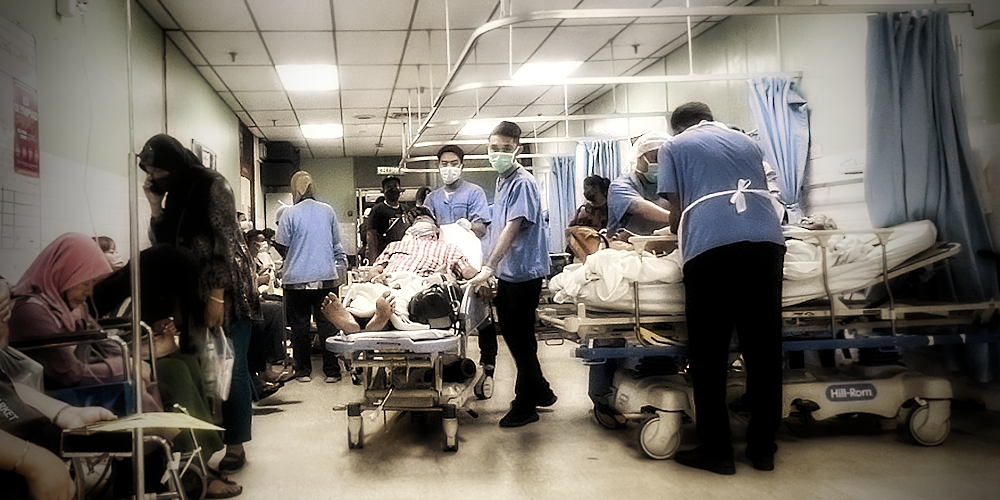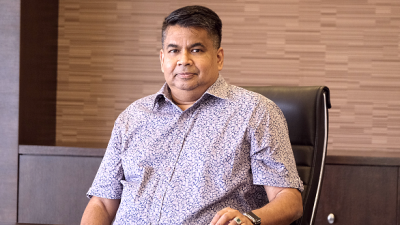
Years ago, our public healthcare system was among the best in the world. It was accessible to many, especially the poor, with consultation fees of only RM1 to RM5.
Although the waiting time was less than desirable, the low cost made it a worthwhile trade-off for many.
However, our public healthcare is not without flaws, and these flaws have not only become apparent but have also been getting bigger and more serious over the past few years.
It is a known fact that our public healthcare is severely lacking healthcare workers (HCWs). Even the number of housemen is on the decline, from 6,134 house officers appointed in 2019 to only 3,271 in 2023, barely higher than the number appointed back in 2010 (CodeBlue, 2024, 2024a).
Judging by the data alone, it is hard to believe that we once had an oversupply of medical graduates, so much so that the then government introduced the contract system in 2016 to try and solve the problem of insufficient positions being created to accommodate the number of new graduates.
So, why is our public healthcare lacking HCWs?
The answer to the question is insanely easy. Those who were working for the public healthcare sector are no longer part of it.
The reasons why they left are also very simple. They are overworked, underpaid, mentally and physically exhausted, with no prospect for career development in sight.
If anything, the past few years are testament to how broken our system is with regard to the public health sector.
The mass exodus of contract medical officers started in 2019 when 475 of them resigned. Following that, the trend continued to rise, reaching 1,354 resignations of contract medical officers in 2022, before declining to 924 in 2023 (CodeBlue, 2024b).
Alarmingly, contract medical officers are not the only group leaving or wanting to leave for greener pastures, as nurses and doctors with permanent posts have also resigned in the past, and 73 per cent of HCWs are considering leaving (New Straits Times, 2023).
Minister of Health Dr Dzulkefly Ahmad stated that more than 54 per cent of the 1,696 medical officers who resigned from public healthcare in 2022 had joined the private sector, and 4.5 per cent of the total number are now working in other countries (Free Malaysia Today, 2024).
Yet, despite multiple pleas from various groups representing HCWs, it would appear that their cries of plight have fallen on deaf ears.
Although Budget 2025 has increased the emoluments to RM24.1 billion, many other issues are not being address properly.
Monetary factors (i.e. salary, allowances) are, of course, a big part of their dissatisfaction, as Daud et al. (2022) found that 84.2 per cent of 316 specialists were not satisfied with their pay, and their qualitative data also revealed the majority of respondents stated that if the pay were much higher, they would stay in public sector.
However, their working conditions are equally important, as 90.8 per cent of the specialists are dissatisfied with their current working conditions, which is notably the highest among all variables (Daud et al., 2022).
There are still problems with their extremely high workload due to a lack of manpower.
Needless to say, the extreme workload that they have to endure has a profound negative impact on their psychological well-being and quality of life.
According to Daher et al. (2024), 78.64 per cent of 231 medical officers from Hospital Tuanku Ja’afar reported being sleep-deprived, with many being less effective in communication and work, and even feeling unsafe to drive.
Furthermore, a survey conducted by the Malaysian Medical Association (MMA) in 2023 found that 90 per cent of doctors were working overtime every day, with 59 per cent of junior doctors having worked more than their scheduled hours (Free Malaysia Today, 2023).
Unfortunately, some HCWs not only have to endure the overwhelming workload but workplace bullying at the same time, leading to a deterioration of their mental health. Some have subsequently chosen to end their lives.
Yet, despite the overwhelming evidence of HCWs being overworked to the end of their wits, no credible solution is in sight, as the Ministry of Health (MOH) has issued an order to increase the working hours of nurses from a 42-hour work-week to a 45-hour work-week effective 1 December 2024.
Jarrar et al. (2022) found a significant positive correlation between working hours and nurses’ perception of ill-being, which includes anxiety, feelings of depression, and sleepiness.
On top of that, the study revealed that nurses who work longer hours have a significantly higher intention to quit while providing a significantly lower quality of care.
Furthermore, comparing HCWs’ working schedules to those of office workers is unfathomable, given the highly stressful situations they are constantly in.
This is without taking into consideration their constant off-the-book overtime, which makes the extension of working hours even less sensible.
The new directive would not only have no positive effect but is effectively pushing more nurses to leave the public sector.
If public healthcare is the heart of the nation, then ours has a ruptured aorta.
On top of losing HCWs, the public healthcare sector is also haemorrhaging resources.
As mentioned before, the cost incurred by people who visited public healthcare is still at the extreme low rate of RM1 to RM5. Furthermore, medications are fully subsidised.
With fees this low, the medical fees collected in 2021 only accounted for 1 per cent of public healthcare expenditure (CodeBlue, 2022).
It is financially unsustainable to continue operating like this.
With our population growing older, HCWs continue leaving for better pay and quality of life, and with medical insurance premiums reported to be rising by 40 per cent to 70 per cent, more patients who cannot afford private healthcare and new medical premiums are going to flock to the public healthcare sector that has increasingly fewer HCWs to tend to them.
In other words, our public healthcare sector is on a countdown to an implosion!
What is needed is a long-term plan to retain current healthcare workers, increase the number of healthcare workers we have, and at the same time keep the quality and standards high.
The utmost priority should be enticing HCWs to stay, for without them, we also cannot train the new blood.
EMIR Research’s previous publication titled “Malaysia’s healthcare dilemma: Tackling the issue of brain drain” detailed several plans on staff retention, ensuring medical officers’ benefits were safeguarded.
This includes prioritising the mental health of HCWs and ensuring their career paths are well-established and transparent.
In addition, it is important to reduce the amount of paperwork that medical officers have to do, so that they can spend their time on actual medical tasks.
Apart from the specialists who participated in the study conducted by Daud et al. (2022), nurses have also reported being overburdened by paperwork and administrative tasks (CodeBlue, 2024c).
It should be obvious that medical personnel should have their minds fully focused on saving lives, not writing endless pages of reports, nor sitting at the front desk typing in patients’ details.
The government also needs to revise the pricing of public healthcare services. The current RM1 to RM5 charges are substantial limiting factors preventing HCWs from receiving the compensation they should be getting, as the financial resources are instead pooled into subsidising the visits and medication.
This is in no way advocating for the removal of healthcare subsidies, but rather suggesting a slight increase in cost, so as not to financially burden the poor and the government.
Increasing the price to RM10 and incurring slight charges for medication could increase the revenue of public healthcare, which could in turn be used to improve the working conditions and the quality of life of our HCWs.
The decision to implement targeted subsidies by making patients in the T15 group pay slightly more, though well-intentioned, its effectiveness remains to be seen, as most people in this income group are already favouring private healthcare for its speed.
Speaking of private healthcare, the government and Bank Negara Malaysia (BNM) need to consider regulating the pricing policies of private healthcare and medical insurance, as they are also a key part of preventing the total collapse of public healthcare.
As mentioned before, if the pricing of private healthcare and medical insurance gets out of hand, the less fortunate will start overwhelming the already battered public healthcare sector.
If public healthcare is the heart of the nation, then ours has a ruptured aorta.
A solution of clinical precision is required, not an RM1 bandage peels off at the slightest inconvenience and doesn’t even begin to address the problem of a bleeding artery.

(Chia Chu Hang is a Research Assistant at EMIR Research, an independent think tank focused on strategic policy recommendations based on rigorous research.)
ADVERTISEMENT
ADVERTISEMENT






































